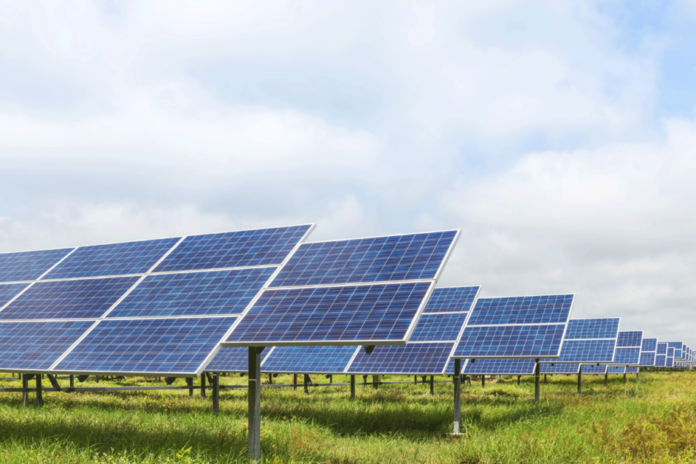American Farmland Trust and Sol Systems have joined forces on a groundbreaking initiative that combines solar energy production with sustainable agriculture. This innovative project will focus on Kernza, a perennial grain derived from intermediate wheatgrass that can be utilized in bread and pastry making as well as beer brewing.
The initiative will be carried out at Sol Systems’ Eldorado Phase II project located in Illinois, where Kernza grain will be integrated under solar panels. Originating from The Land Institute in Salina, Kansas, Kernza crops have roots that extend 10 feet or more below the soil surface, absorbing nutrients and water while sequestering atmospheric carbon into the soil. This carbon contributes to the creation of organic matter, which plays a crucial role in maintaining soil health. The Land Institute has even introduced a Perennial Percent product label for any food or beverage containing at least 1% Kernza.
Through this project, Sol Systems, a reputable clean energy firm, and American Farmland Trust, a national organization dedicated to a comprehensive approach to agriculture, seek to gather data on the practicality and advantages of cultivating perennial crops like Kernza alongside solar energy production. The initiative is driven by three primary objectives: conducting research to evaluate the technical feasibility of Kernza production on a utility-scale solar site, improving soil and water quality, and fostering collaboration among researchers, solar developers, and farmers to seamlessly integrate solar energy and agriculture.
This collaborative effort represents a significant step forward in promoting sustainability and innovation within the agricultural and renewable energy sectors. By combining solar energy production with the cultivation of Kernza, a resilient and environmentally beneficial crop, the initiative aims to demonstrate the potential for coexisting agricultural and energy production systems that contribute to a more sustainable future.
The integration of Kernza under solar panels not only maximizes land use efficiency but also enhances the overall ecological benefits of the solar energy site. By harnessing the natural capabilities of Kernza to sequester carbon and improve soil health, the project showcases the potential for synergies between agriculture and renewable energy production. This innovative approach not only supports the transition towards a more sustainable and regenerative agricultural system but also highlights the potential for diversification and resilience in agricultural practices.
As part of this initiative, Sol Systems and American Farmland Trust are committed to conducting in-depth research to evaluate the technical feasibility and economic viability of integrating Kernza production with solar energy generation. By collecting data on crop yields, soil health, and ecosystem benefits, the project aims to provide valuable insights into the potential for scaling up this integrated approach on a larger scale.
Furthermore, the initiative seeks to promote collaboration and knowledge sharing among stakeholders in the agriculture and renewable energy sectors. By bringing together researchers, solar developers, and farmers, the project aims to facilitate the exchange of expertise and best practices to advance the integration of solar energy and agriculture. This collaborative effort will help build a community of practice dedicated to exploring innovative solutions that promote sustainability and resilience in both sectors.
In conclusion, the partnership between American Farmland Trust and Sol Systems on the integration of Kernza with solar energy production represents a significant milestone in advancing sustainable agriculture and renewable energy. By harnessing the unique capabilities of Kernza as a perennial crop, this initiative demonstrates the potential for coexisting agricultural and energy production systems that contribute to a more sustainable future. Through research, collaboration, and innovation, this project sets a precedent for future endeavors that seek to harmonize agriculture and renewable energy production for the benefit of both the environment and society as a whole.




